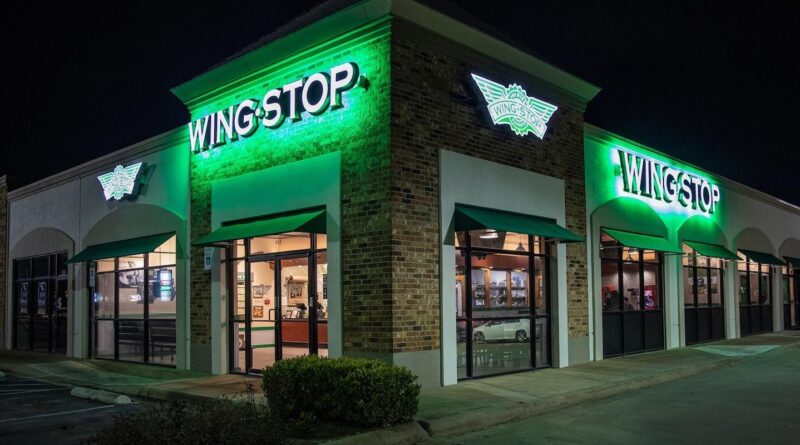History of Wingstop Founded in Garland Texas
Wingstop, a popular chain known for its mouth-watering chicken wings, has become a household name in the fast-food industry. While the brand is now recognized globally, its roots trace back to a small town in Texas. Wingstop was founded in Garland, Texas, in 1994, and over the decades, it has grown from a single location to an international franchise. Understanding Wingstop’s journey from its humble beginnings in Garland to its current status offers insight into the success of this beloved brand.
Founding of Wingstop
The Origins of Wingstop in Garland
Wingstop’s story began in Garland, Texas, a suburb of Dallas, where it was founded by Antonio Swad. Swad, a restaurateur with a keen sense for the fast-food market, identified a gap in the industry: the lack of a dedicated chicken wing concept. Inspired by this opportunity, he set out to create a restaurant that specialized in high-quality chicken wings, offering a unique dining experience centered around this popular American dish.
The Vision Behind the Concept: Antonio Swad
Antonio Swad, who had already experienced success with his previous venture, Pizza Patron, envisioned Wingstop as more than just a fast-food restaurant. He wanted to create a brand that offered not only delicious wings but also an immersive experience for customers. The aviation theme of Wingstop, with its nostalgic nod to the golden age of flight, was a strategic choice that set the brand apart from other restaurants.
The Official Opening of the First Wingstop in 1994
The first Wingstop restaurant opened its doors in Garland in 1994. Located in a modest strip mall, the restaurant quickly gained a loyal following, thanks to its focus on freshly cooked wings and a variety of bold, flavorful sauces. The success of this initial location demonstrated the viability of the concept, and Swad began exploring the possibility of expansion.
The Unique Concept of Wingstop
Focus on Chicken Wings: A Novel Idea
At the time of Wingstop’s founding, few restaurants were dedicated solely to chicken wings. This focus allowed Wingstop to carve out a niche in the crowded fast-food market. By offering a simple, specialized menu, Wingstop could concentrate on perfecting its product and delivering consistent quality to customers.
The Influence of Aviation-Themed Branding
The aviation theme was integral to Wingstop’s identity from the beginning. The décor of the restaurants, which featured vintage aviation posters, aircraft models, and a general air of mid-20th-century nostalgia, created a unique atmosphere that resonated with customers. This thematic approach helped to build a strong brand identity, differentiating Wingstop from other fast-food chains.
Early Menu Offerings and Customer Reception
Wingstop’s initial menu was straightforward, featuring classic bone-in wings with a variety of sauces ranging from mild to extra hot. The simplicity of the menu allowed the brand to focus on quality, ensuring that each order met high standards. The customer response was overwhelmingly positive, with many patrons returning frequently to enjoy the flavorful wings and the inviting atmosphere.
Expansion Beyond Garland
Growth in the Dallas-Fort Worth Metroplex
Following the success of the original Garland location, Wingstop began expanding within the Dallas-Fort Worth area. The demand for quality wings and the unique dining experience that Wingstop offered fueled its growth. By the late 1990s, multiple locations had opened across the metroplex, each maintaining the same high standards that had made the original restaurant a local favorite.
The Franchising Model: From Local to National
To accelerate its growth, Wingstop adopted a franchising model. This decision allowed the brand to expand rapidly, attracting entrepreneurs eager to capitalize on the growing popularity of chicken wings. By the early 2000s, Wingstop had established a presence in several states, becoming a well-known name in the fast-food industry.
The First 100 Locations and National Recognition
The opening of the 100th Wingstop location was a significant milestone for the brand, marking its transition from a regional chain to a national player. National recognition came not only from the rapid expansion but also from the consistent quality and innovation that Wingstop brought to the fast-food industry. By maintaining a strong brand identity and focusing on its core product—delicious chicken wings—Wingstop continued to attract new customers across the country.
Wingstop’s Menu Evolution
Introduction of New Wing Flavors
As Wingstop grew, so did its menu. The introduction of new wing flavors became a key part of the brand’s strategy to keep customers engaged and attract new ones. Flavors such as Lemon Pepper, Garlic Parmesan, and Mango Habanero were added, each offering a unique taste experience. These additions not only diversified the menu but also allowed Wingstop to appeal to a broader audience with varying taste preferences.
Expansion of the Menu: Sides, Dips, and More
In addition to expanding its wing flavors, Wingstop began offering a range of sides and dips. Classic options like fries and coleslaw were joined by more creative offerings such as Cajun fries and cheese fries. The introduction of dips like ranch and blue cheese further enhanced the dining experience, giving customers more ways to enjoy their wings.
Keeping the Focus on Quality and Consistency
Throughout its expansion and menu evolution, Wingstop has maintained a strong commitment to quality and consistency. Each location is trained to prepare wings and sides to the same high standards, ensuring that customers receive the same delicious experience whether they are dining in Garland, Texas, or any other Wingstop location across the globe.
The Role of Technology in Wingstop’s Growth
Early Adoption of Online Ordering
Wingstop was an early adopter of online ordering, recognizing the convenience it offered to customers. By making it easy for customers to place orders online, Wingstop expanded its reach and made its products more accessible. This innovation helped to drive sales and set the stage for future technological advancements.
Development of the Wingstop App
The development of the Wingstop app further enhanced the customer experience. The app allows users to order their favorite wings, customize their meals, and track orders in real-time. It also offers exclusive deals and promotions, encouraging customer loyalty. The app has been a significant factor in Wingstop’s ability to adapt to changing consumer behaviors, particularly the shift towards mobile ordering.
Leveraging Social Media and Digital Marketing
Wingstop has also effectively leveraged social media and digital marketing to connect with its audience. The brand uses platforms like Twitter, Instagram, and Facebook to engage with customers, promote new menu items, and share special offers. This digital presence has been instrumental in building a strong community of Wingstop fans and driving brand awareness.
The Cultural Impact of Wingstop
Wingstop as a Pop Culture Icon
Over the years, Wingstop has become more than just a restaurant; it has become a pop culture icon. Its distinctive branding, flavorful wings, and strong social media presence have made it a favorite among celebrities, athletes, and influencers. This popularity has further cemented Wingstop’s place in the fast-food landscape.
Partnerships with Celebrities and Sports Teams
Wingstop has capitalized on its cultural relevance by partnering with celebrities and sports teams. These partnerships have included endorsements from well-known figures in the music and sports industries, as well as sponsorship deals with major sports teams. These collaborations have helped Wingstop reach new audiences and reinforce its brand identity.
Wingstop’s Influence on the American Fast-Food Landscape
Wingstop’s success has influenced the broader fast-food industry, particularly in the way that other chains approach menu specialization and branding. The brand’s focus on a single product—chicken wings—paired with a strong thematic identity, has inspired other restaurants to adopt similar strategies. Wingstop’s rise to prominence has also highlighted the potential for niche concepts to succeed in the competitive fast-food market.
Wingstop’s Business Model
Focus on Takeout and Delivery: Minimizing Overheads
Wingstop’s business model is heavily focused on takeout and delivery, which has allowed the brand to minimize overhead costs associated with large dining spaces. This model has proven especially effective in today’s fast-paced world, where convenience is a top priority for many consumers. By prioritizing off-premise sales, Wingstop has been able to maintain profitability even as dining trends have shifted.
The Importance of Franchisee Relationships
The franchising model has been a key driver of Wingstop’s growth, and maintaining strong relationships with franchisees is crucial to the brand’s success. Wingstop provides extensive support to its franchisees, including training, marketing assistance, and supply chain management. This collaborative approach has helped ensure that each Wingstop location meets the brand’s high standards.
Supply Chain Management and Vendor Partnerships
Effective supply chain management is critical to Wingstop’s ability to deliver fresh, high-quality wings to its customers. The brand has established strong partnerships with vendors to ensure a consistent supply of chicken and other ingredients. By maintaining close relationships with its suppliers, Wingstop can control costs and ensure that its menu offerings remain consistent across all locations.
Challenges and Competition
Facing Competitors in the Wing Industry
As Wingstop has grown, it has faced increasing competition from other brands in the wing industry. Competitors like Buffalo Wild Wings and smaller regional chains have challenged Wingstop’s dominance. However, Wingstop’s focus on quality, consistency, and innovation has allowed it to maintain its leadership position in the market.
Navigating Economic Downturns and Market Shifts
Like any business, Wingstop has had to navigate economic downturns and shifts in the market. The company’s ability to adapt to changing conditions, such as the rise of delivery services and the impact of economic recessions, has been key to its continued success. Wingstop’s focus on takeout and delivery has particularly helped it weather economic challenges that have affected other dine-in-focused chains.
Customer Loyalty and Retention Strategies
Maintaining customer loyalty is essential in the competitive fast-food industry. Wingstop has implemented various strategies to retain its customers, including loyalty programs, special promotions, and a focus on customer service. By continually engaging with its customers and offering value-added services, Wingstop has built a loyal following that continues to drive its growth.
Community Engagement and Corporate Responsibility
Wingstop’s Involvement in the Garland Community
Wingstop has maintained a strong connection to its roots in Garland, Texas. The brand has been involved in various community initiatives, supporting local events, and contributing to charitable causes. This involvement has helped Wingstop build a positive reputation in its home community and beyond.
Charitable Initiatives and Philanthropy
In addition to its local community efforts, Wingstop has engaged in broader charitable initiatives and philanthropy. The brand has supported causes related to education, hunger relief, and disaster recovery. Through these efforts, Wingstop has demonstrated its commitment to making a positive impact on society.
Commitment to Sustainability and Ethical Sourcing
Wingstop has also made strides in promoting sustainability and ethical sourcing. The company has implemented measures to reduce its environmental impact, such as sourcing chicken from suppliers that meet high standards for animal welfare and minimizing waste in its operations. These efforts reflect Wingstop’s commitment to responsible business practices.
Global Expansion of Wingstop
Entering International Markets
Building on its success in the United States, Wingstop has expanded into international markets. The brand has opened locations in countries such as Mexico, the United Kingdom, and Singapore. This global expansion has allowed Wingstop to reach new customers and establish itself as an international brand.
Adapting the Wingstop Concept for Global Audiences
As Wingstop has entered new markets, it has adapted its concept to suit local tastes and preferences. This has included introducing new flavors, adjusting portion sizes, and offering culturally relevant menu items. By tailoring its offerings to different markets, Wingstop has successfully established a foothold in the global fast-food industry.
Success Stories from International Locations
Wingstop’s international locations have seen varying degrees of success, with some markets embracing the brand more enthusiastically than others. In countries like Mexico and the United Kingdom, Wingstop has gained a strong following, thanks to its high-quality wings and distinctive branding. These success stories highlight the potential for further international growth as Wingstop continues to expand its global footprint.
Leadership and Management at Wingstop
Antonio Swad’s Legacy
Antonio Swad’s vision and leadership were instrumental in the creation and early success of Wingstop. His focus on quality, customer experience, and brand identity laid the foundation for what Wingstop would become. Although Swad eventually stepped down from day-to-day operations, his influence is still evident in the company’s ongoing commitment to excellence.
Key Executives and Their Contributions
Over the years, Wingstop has been led by a team of executives who have guided the brand through its growth and expansion. These leaders have brought expertise in areas such as operations, marketing, and finance, helping to drive Wingstop’s success. The contributions of these key executives have been critical in navigating the challenges of a rapidly changing industry.
Strategic Decisions that Guided Wingstop’s Growth
Several strategic decisions have been crucial to Wingstop’s growth, including the decision to franchise, the focus on takeout and delivery, and the expansion into international markets. These decisions, guided by the company’s leadership, have helped Wingstop stay ahead of trends and continue its upward trajectory.
Wingstop’s Adaptation During the COVID-19 Pandemic
Shifts in Business Model: Emphasizing Delivery and Safety
The COVID-19 pandemic posed significant challenges to the restaurant industry, but Wingstop was well-positioned to adapt. The brand quickly shifted its focus to delivery and contactless takeout, ensuring that customers could continue to enjoy their favorite wings safely. This emphasis on safety and convenience allowed Wingstop to maintain its customer base during a difficult time.
How Wingstop Supported Franchisees and Employees
During the pandemic, Wingstop took steps to support its franchisees and employees, providing financial assistance, resources for navigating new safety protocols, and mental health support. These efforts helped to ensure that franchisees could keep their businesses running and that employees felt supported during a challenging period.
The Pandemic’s Long-Term Impact on Wingstop’s Operations
The pandemic has had a lasting impact on Wingstop’s operations, with delivery and takeout becoming even more central to the business model. The company has also accelerated its digital transformation, with a greater focus on online ordering and mobile app development. These changes have positioned Wingstop for continued success in the post-pandemic world.
Wingstop’s Vision for the Future
Plans for Continued Domestic Growth
Wingstop has ambitious plans for continued growth in the United States, with a goal of reaching 4,000 locations. The brand plans to achieve this by expanding into new markets, opening more franchise locations, and continuing to innovate its menu and customer experience.
Innovations in Menu and Technology
Innovation will play a key role in Wingstop’s future. The brand is exploring new menu items, including plant-based options, to meet evolving consumer preferences. Additionally, Wingstop is investing in technology, such as AI and data analytics, to improve operations and enhance the customer experience.
Wingstop’s Role in Shaping the Future of Fast-Food
As a leader in the fast-food industry, Wingstop is poised to shape the future of the sector. The brand’s focus on quality, convenience, and innovation will continue to influence trends and set standards for other companies to follow. Wingstop’s commitment to its core values will ensure its place as a beloved and successful brand for years to come.
Conclusion
Summary of Wingstop’s Journey from Garland to Global
Wingstop’s journey from a single restaurant in Garland, Texas, to a global fast-food powerhouse is a remarkable story of vision, innovation, and dedication. The brand’s success is a testament to the power of focusing on quality, consistency, and customer experience. From its early days in Texas to its international expansion, Wingstop has remained true to its roots while continually evolving to meet the needs of its customers.
Wingstop’s Ongoing Commitment to Quality, Innovation, and Community
As Wingstop looks to the future, it remains committed to the principles that have guided its success. The brand’s ongoing focus on quality, innovation, and community engagement will continue to drive its growth and ensure its place as a leader in the fast-food industry. With a strong foundation and a clear vision for the future, Wingstop is well-positioned to continue its journey of success and expansion.
Discover more from City Towner
Subscribe to get the latest posts sent to your email.




